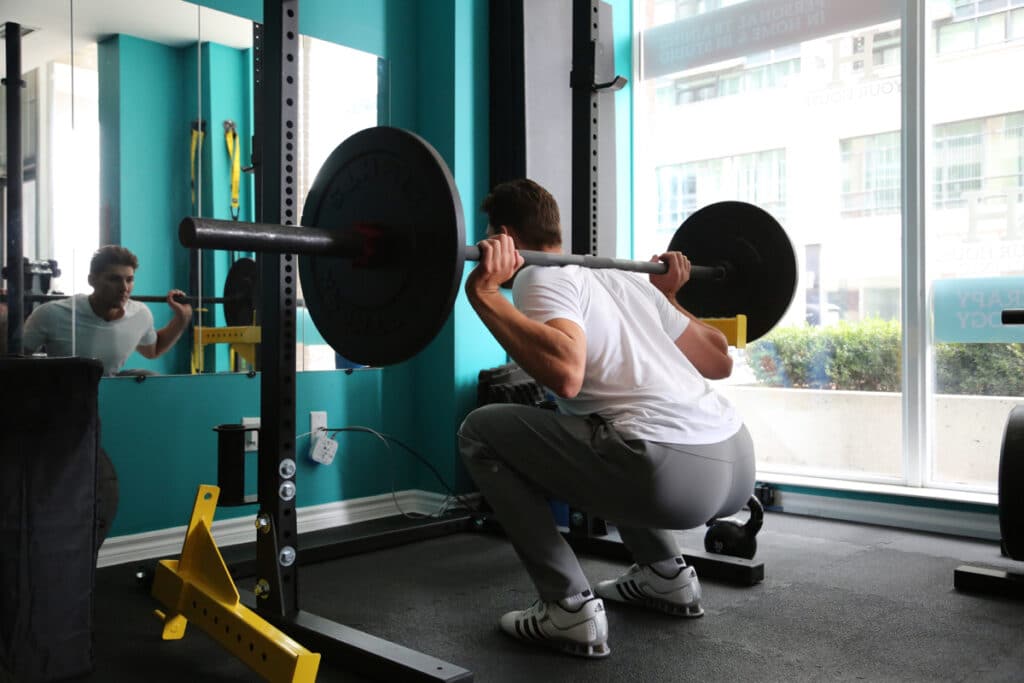IT Band Syndrome: Symptoms, Causes, Treatment & Exercises
Whether you’re a runner, cyclist, hiker or someone whose work keeps them on their feet for long stretches of time, you’re likely to experience the ill effects of repetitive motion on your lower extremities at some point.
One such overuse injury? IT band syndrome.
What is IT band syndrome?
Iliotibial band syndrome – commonly called IT band syndrome or ITBS – is an extremely common injury that typically presents as outer knee pain. Studies have shown that ITBS makes up approximately 22% of all lower extremity injuries in runners and 15% of all knee overuse injuries in cyclists.

The iliotibial band is a long, flexible band of fascia (nerve-rich tissue) that runs from the two primary hip abductor muscles (the tensor fascia latae and the gluteus maximus) to the top of the shinbone, stretching along the outside of the thigh and knee. This connective tissue helps extend, rotate and abduct the hip while stabilizing the knee and protecting the outer thigh.
IT band syndrome is a repetitive use injury that occurs when the IT band becomes inflamed from overuse of the knee during running, hiking, cycling or walking. Sitting, kneeling, squatting or standing for long periods of time can also irritate the IT band.
IT Band Syndrome Symptoms & Causes
The most common symptom of ITBS is pain on the outer side of the knee that worsens with repetitive movement (i.e. running, cycling, exercising). IT band syndrome can also cause a clicking, snapping or popping sensation on the outside of the knee as it is bent and straightened.
If the IT band is tight, repetitive motion can cause the IT band to rub against the iliotibial bursa – a fluid-filled sac between the IT band and the knee joint – or the thigh bone. This excessive rubbing can cause inflammation and pain.
ITBS Symptoms
- Sharp, stinging or stabbing pain along the outer side of the knee and/or thigh
- Pain is more intense when the knee is slightly bent
- Snapping, popping or clicking sensation in the outer knee
- Swelling, warmth and/or redness on the outer side of the knee
- Continuous pain, even after stopping activity
- Tightness and/or pain on the outer side of the hip
Common IT Band Syndrome Causes

Strength Imbalance
A strength imbalance between the quadriceps and the hamstrings can cause improper alignment and poor muscle control, which may lead to IT band strain. Underdeveloped hip abductor muscles and abdominal muscles can also cause imbalances that contribute to IT band syndrome.
Improper Training Techniques
A number of training mistakes can contribute to IT band syndrome, including:
- Not stretching, warming up or cooling down properly (or at all)
- Not allowing for proper recovery time between workouts
- Ramping up training too quickly
- Pushing past limits too far and too often
- Incorrect shoe or bike fitting
- Training on one-sided sloped surfaces (i.e. only one side of a sloping street or banked track)
- Poor form
Biology & Biomechanics
Some orthopedic conditions can contribute to IT band syndrome, as can various biomechanics, including:
- Arthritis in the knee
- Bowed legs
- Uneven leg length
- Noticeable weakness in the hip muscles, glutes or abs
- Rotating the entire leg inward while walking or running
- Rotating the foot or ankle inward when walking or running
IT Band Syndrome Treatment
Thankfully, ITBS can usually be treated at home with rest, training adjustments, massages and stretches. If the pain doesn’t subside after a few months of home treatment, you should see an orthopedic specialist or physical therapist who can evaluate your injury and get to the root of the problem.
Home Treatments
R.I.C.E. – Rest, Ice, Compression, Elevation
Foam Roller – Lay sideways on a foam roller and slowly work your way back and forth from the bottom of the hip to the top of the knee to help break up the fascia.

Deep Tissue Massage – A professional masseuse can dig into your IT band, helping separate the tissues and encouraging the IT band to release.
Stretches – Side-lying leg raises, cow face pose, seated spinal twists and other stretches can help improve flexibility and strength around your IT band.
Fix Your Stride – If you’re a runner, shortening your stride or improving your running form can help improve and/or prevent IT band syndrome.
If you’re still experiencing pain and other symptoms after six weeks of rest and home therapies, you should see an orthopedic doctor for professional evaluation and treatment.
Please contact us with any questions you may have about IT band syndrome, your symptoms or to make an appointment.
Leave a Reply